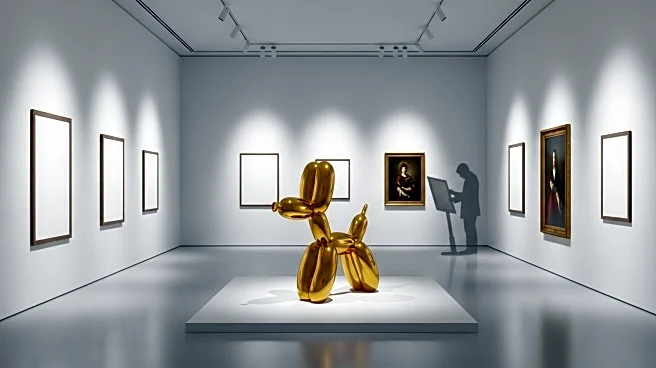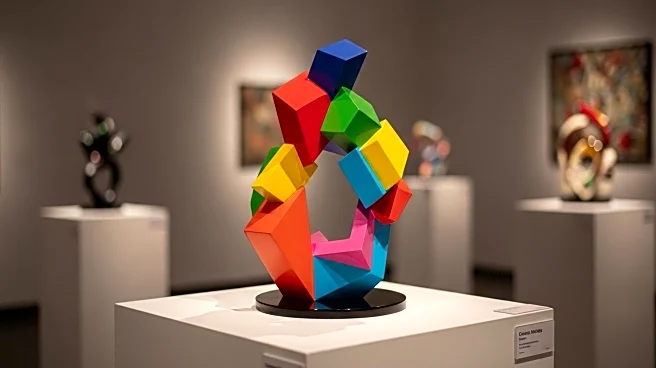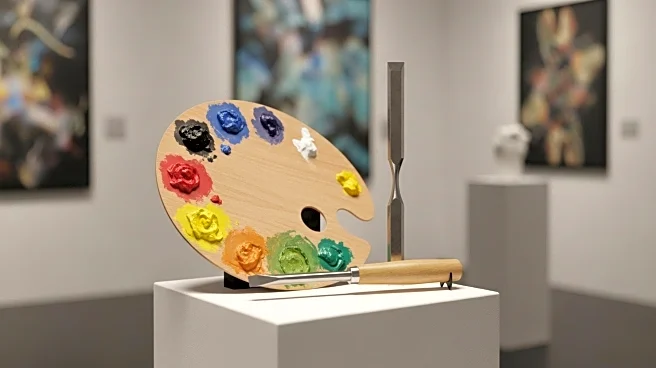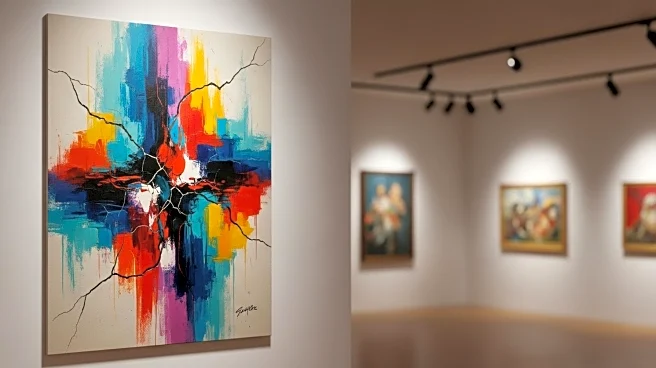What's Happening?
The art world is facing significant challenges in integrating e-commerce into its traditional business model. Despite the potential for growth, the industry has been slow to adopt digital sales platforms due to unique obstacles. Galleries have resisted the 'buy now' function, fearing it might disrupt the personal relationships that drive art deals. The COVID-19 pandemic forced many to embrace digital solutions, but the anticipated growth in online art sales has not materialized. Major players like David Zwirner and Christie's have exited digital projects, reflecting the difficulties in adapting to e-commerce. The art market's contraction and the collapse of the NFT trend have further complicated efforts to digitalize art sales.
Why It's Important?
The struggle to integrate e-commerce in the art world highlights broader challenges in adapting traditional industries to digital platforms. The art market's resistance to e-commerce affects its ability to reach new audiences and leverage technology for growth. This reluctance may limit the industry's potential to attract tech-savvy collectors and capitalize on digital trends. The failure to embrace e-commerce could result in missed opportunities for expanding the market and engaging younger demographics. As other industries successfully transition to online sales, the art world risks falling behind, potentially impacting its long-term sustainability and relevance.
What's Next?
The future of e-commerce in the art world remains uncertain. Industry leaders may need to reconsider their strategies and find ways to balance traditional practices with digital innovation. There is potential for new platforms to emerge that cater to the unique needs of art sales, focusing on lower-priced items and artist merchandise. As the market continues to evolve, galleries and auction houses might explore hybrid models that combine in-person events with online sales to enhance engagement. The art world must adapt to changing consumer expectations and technological advancements to remain competitive.
Beyond the Headlines
The art world's e-commerce challenges raise ethical and cultural questions about the preservation of personal relationships and the authenticity of art transactions. The shift towards digital sales could alter the dynamics of art ownership and influence the perceived value of artworks. As technology continues to impact the industry, stakeholders must navigate the balance between innovation and tradition, ensuring that the essence of art is not lost in the pursuit of digital growth.










